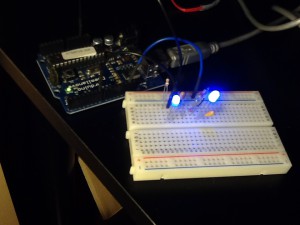Matching Transistors, 2SC1815 or 2N3904
Gerber File Viewers
There are choices of free Gerber file viewers out Internet. I’ve tried some so I’ll take notes for archival purpose.
I decided to use GC Prevue btw.
Analog2.0: Noise&Mixer and LFO Board Update
How to Convert Sampling Rate with Java
More on Semiconductor Switch
Continued from yesterday’s article. Here are the switches I compared.
Mechanical Push Switch (Tactile)
 You hear click noises.
You hear click noises.
[audio:https://gaje.jp/blog/wp-content/uploads/2011/12/tactile.mp3|titles=tactile]
Relay
 There are occasional pop noises.
There are occasional pop noises.
[audio:https://gaje.jp/blog/wp-content/uploads/2011/12/relay.mp3|titles=relay]
Analog Switch
 Not bad but click noise intermittently happens.
Not bad but click noise intermittently happens.
[audio:https://gaje.jp/blog/wp-content/uploads/2011/12/tactile.mp3|titles=analog_sw_chat_cancel]
JFET Switch
 The most stable so far.
The most stable so far.
[audio:https://gaje.jp/blog/wp-content/uploads/2011/12/JFET.mp3|titles=JFET]
Semiconductor switch
My first Optical Organ, described in the following page, has a problem that it makes annoying click noises at key on/off.
https://gaje.jp/projects/synth_effect/optical_organ_e/
I’ve analyzed the issue, and identified that switches to turn sound on/off has the problem.
Charge Pump with Arduino
Right: charged, left: normal 5V drive
A charge pump is a circuit that boosts DC voltage. I tried to make a charge pump using Arduino to enhance power supply for a blue LED. A blue LED typically has higher forward voltage. Some ones go to 4V, so 5V-supply processors are slightly powerless to drive it. Thus a charge pump helps to enhance blue LED brightness.
As you can see in the photo above, charged one is brighter. The supply voltage was increased to 8V in this case.

